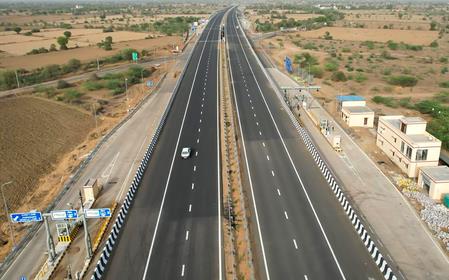GST Reforms In Food Processing And Logistics Sectors To Empower Consumers, Industry
By reducing rates on essential food items, packaging materials, and transport vehicles, the government has not only simplified taxation but also laid a strong foundation for sustainable growth in food processing, logistics, and allied industries.
Food items like ultra-high temperature (UHT) milk, paneer/chena, breads like paratha/parotta, khakhra, chapati/roti and pizza bread have been exempted from GST. The indirect taxes on packaged food/snacks, chocolates, sauces, juices, coffee, etc. have been reduced to 5 per cent, boosting demand and industry growth.
Packaging materials like crates and paper are now taxed at 5 per cent, lowering logistics and production costs. GST on trucks and goods vehicles have been cut from 28 per cent to 18 per cent, reducing freight rates and strengthening supply chains, said the government.
The government has aimed to simplify taxation in the food processing industry by bringing most food items under the 5 per cent or nil tax slab.
This framework promotes uniformity, transparency, and ease of compliance for businesses, while reducing the scope for disputes as certain confusion arose due to classification issues, where products with similar ingredients were placed under different tax slabs. This often led to disputes, litigation, and uncertainty for both industry and consumers.
At the same time, it also provides price relief to consumers, as seen in the exemption of staple Indian breads like Paratha, Parotta, and Roti from GST, reflecting their status as essential household foods.
The government ensures food security primarily through the National Food Security Act (NFSA), which entitles up to 75 per cent of the rural population and 50 per cent of the urban population to receive highly subsidised food grains via the Targeted Public Distribution System.
The Pradhan Mantri Garib Kalyan Anna Yojana (PMGKAY) continues to strengthen this coverage by providing free food grains to over 81.35 crore beneficiaries (as of June 27, 2025), with the scheme extended for five years from January 2024.
Additionally, the government uses initiatives like the Price Stabilisation Fund and subsidised sale of staples such as Bharat Dal and Bharat Rice to control price volatility and make essential food items affordable.
“Reduction of GST on food items to 5 per cent or nil benefits not only consumers but every stakeholder in the food processing value chain - from farmers and cooperatives to MSMEs, retailers, and exporters,” according to the government.
-IANS
na/

Legal Disclaimer:
MENAFN provides the
information “as is” without warranty of any kind. We do not accept
any responsibility or liability for the accuracy, content, images,
videos, licenses, completeness, legality, or reliability of the information
contained in this article. If you have any complaints or copyright
issues related to this article, kindly contact the provider above.
Most popular stories
Market Research

- Spycloud Launches Consumer Idlink Product To Empower Financial Institutions To Combat Fraud With Holistic Identity Intelligence
- Japan Green Hydrogen Market Size To Reach USD 734 Million By 2033 CAGR Of 27.00%
- Primexbt Wins Global Forex Award For Best Multi-Asset Trading Platform
- Primexbt Launches Empowering Traders To Succeed Campaign, Leading A New Era Of Trading
- United States Insulin Pumps Market Forecast On Share & Demand Mapping 20252033
- Cartesian Launches First Outsourced Middle-Back-Office Offering For Digital Asset Funds





















Comments
No comment